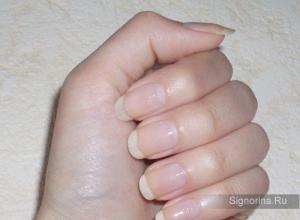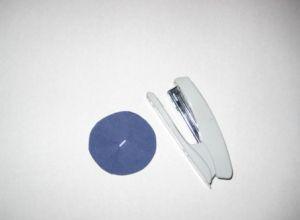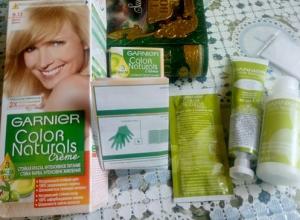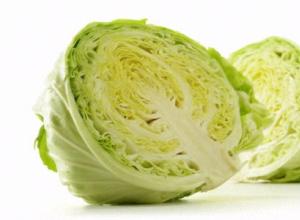Pullover kimono knitted in a single fabric (Knitting). Knitted pullover with kimono sleeves Boxy pullover with kimono sleeves with "Double rice" pattern
 Knitted pullover with kimono sleeves
Knitted pullover with kimono sleeves
Size: 42 — 48
Thanks to the wide cut, the pullover fits all sizes listed.
You will need: 450 grams mocha color (color 11) Cashsilk Lana Grossa yarn (40% polyamide, 15% cashmere, 15% silk, 75m/50 grams); straight needles No. 9, circular needles No. 9 80 cm long.
Edge chain: Knit the 1st stitch of each row. cross. Remove the last stitch of each row as a purl, and keep the thread before working.
Persons smooth surface: persons r. - persons p., out. r. - purl p.
Stockinette stitch with fan pattern and highlighted additions: knit according to the pattern. The numbers on the left indicate purl. r., on the right - faces. r. In width, start with the loops between the arrows. All loops are indicated on the diagram. Add selected loops on both sides using yarn overs according to the diagram. In each trace. persons and out. r. knit these yarn overs. cross. or persons. cross. At Height knit 1-92 r, then repeat the 91st and 92nd rows.
Knitting density: 11.5 loops and 16 rows of knit stitches with a fan pattern, knitting needles No. 9 = 10x10 cm.
Description of knitting a pullover with kimono sleeves:
Execution: start from the left sleeve. Cast on 25 loops. For the placket, knit 2 cm = 4 rows of knits. stitch, starting from 1 purl. r. according to the diagram. Then knit faces. satin stitch with a pattern of fans according to the pattern, starting from the 5th row, and at the same time cast on 10 stitches using yarn overs = 35 stitches. Then 5 times in each person. until the 14th p.m. cast on 19 stitches before and after the central stitches and 1 stitch each using a yarn over, knit the loops between them with an elastic band according to the pattern. On the 16th subtract 10 sts, for which knit sts together according to the diagram. This creates a pattern resembling a fan in the center. Repeat this 6 more times in height according to the pattern. From 32nd r. Cast on stitches on both sides for the kimono shape using yarn overs. So after the 69th r. from the beginning of work, before and after the central 19 loops on the knitting needles, 40 stitches each. The side line has been reached and the sleeve has been completed. in.0 r. cast on 2 stitches on both sides using yarn overs for the edge strip and knit it according to the pattern. Taking into account the growing number of loops, transfer stitches to circular knitting needles.
Now knit the back and front almost straight. In the center, continue to increase and decrease for the fan pattern until you start cutting out the neckline. Chrome. Continue knitting the bar sequentially. in 89th r. = purl r. According to the diagram, cross the central 9 sts, and subtract 1 st as described. In the 90th r. To cut the neckline, divide the work in the center and knit both sides separately by 49 sts. On the inside, perform the edging according to the pattern. bar First, continue knitting the back on the right side. After 12.5 cm = 20 rows from the division, set aside. Then knit before and p. Also set aside.
Then knit the right sleeve on the 2nd half of the back and front in the same way, and in the 89th row cross the central 9 stitches to the right, for which remove the first 5 stitches to the auxiliary. knitting needle and place it behind the work, then knit as the 1st piece and decrease 1 stitch.
Assembly: straighten the parts, moisten and let dry. Fold both parts back to back and for the central seams, connect the loops of each half together. To do this, knit faces sequentially. 1 st from the front knitting needle together with 1 st from the rear knitting needle and immediately close. Sew the side seams and sleeve seams with a mattress stitch, taking only half of the stitches of both parts.
Knitted pullover with kimono sleeves  Pattern, knitting pattern and symbols
Pattern, knitting pattern and symbols


Pullover-kimono, knitted in a single fabric, from Italian designers.
Size: 44
You will need: 350 g of blue Mondial Dolce Mohair yarn (60% royal mohair, 40% acrylic, 150 m/50 g), straight needles No. 5 and No. 6.
Knitting technique.
Elastic band 1x1: alternately knit 1, purl 1.
Elastic band 3x3: alternately knit 3, purl 3.
Double elastic band: cast on half of the required stitches with a contrasting thread;
1st row: using a working thread, knit *1 knit, 1 yarn over*, repeat from * to *;
2nd row: *knit yarn over, remove 1 stitch as purl. without knitting, thread before work*, repeat from * to *;
3rd and last row: *knit 1, remove 1 st as purl, thread before work*, repeat from * to *; Unravel the contrasting thread in the finished part.
Basic pattern (even number of loops):
1st row: purl all;
2nd row: *k1, p1*, repeat from * to *;
3rd row: repeat rapport from the 1st row.
Braid to the left (width 9 points):
Rows 1, 3 and 5: k6, p1, k1, p1;
7th row: cross 6 sts to the left (leave 3 sts on the auxiliary needle before work, knit 3 and knit loops from the auxiliary knitting needle), purl 1, knit 1, purl 1;
Double braid (width 18 p.):
Rows 1, 3 and 5: p1, k1, p1, k12, p1, k1, p1;
2nd and all even rows: knit according to the pattern;
7th row: P1, K1, P1, 6 sts, cross to the right (leave 3 sts on the auxiliary knitting needle while working, k3 and knit stitches from the auxiliary knitting needle), 6 sts. cross to the left, purl 1, knit 1, purl 1;
9th row: repeat rapport from the 3rd row.
Knitting density, main pattern: 16 p. and 20 r. = 10 x 10 cm.
DESCRIPTION OF THE WORK
Back (knitted in one piece, starting from the left sleeve). On knitting needles No. 5, cast on 37 sts and knit 4 r. double elastic band and 10 rub. rubber band 3x3. Switch to needles No. 6 and knit as follows: k3, p1, k1, p1, 31 sts with the main pattern, while adding on the right every 4th row. 12 x 1 p., on the left in every 6th row. 13 x 1 p. In the 16th r. from the elastic, perform the first crossing of the braid to the left on the first 6 faces., next. for 1 purl; in 47th r. from the elastic band, perform the first crossing to the right onto the trail. behind them are 6 stitches to form a double braid (see diagram). After 55 r. dial again at the beginning of the river. 1 x 40 sts and knit as follows: 3 sts with double rib, 22 sts with 1x1 rib, p1, k1, p1, k12. (later crossing them for a double braid), p1, k1, p1, k12. (lastly crossing them for a double braid), purl 1, knit 1, purl 1, and then until the end of the r. main pattern. Starting from 121st r. decrease on the left every 6th row. 13 x 1 st. After 67 cm from the elastic band, close the first 40 sts and then decrease on the right in every 4th row. 12 x 1 p. After 94 cm from the elastic band, switch to knitting needles No. 5, knit 10 r. elastic band 3x3 and 4 p. with a double elastic band and close all the loops with a knitted seam.
Before. Knit like a back, starting from the right sleeve, but starting from the 77th r. for the neckline, decrease to the left every 2nd r. 6 x 1 p., and starting from the 111th p. add to the left every 2nd row. 6 x 1 p.
Assembly. Connect the front and back pieces by sewing the top and bottom seams of the sleeves and side seams. For the collar, use knitting needles No. 5 to cast on 39 sts and knit 3 sts with a double rib and 36 sts with a 1x1 rib. After 44 cm, close all loops. Sew the closed loops to the loops of the cast-on row, sewing the collar into a ring, and sew the collar to the neck so that the double elastic loops are on the outside.
 Educational video course on artistic knitting “Secrets of Irish lace”
Educational video course on artistic knitting “Secrets of Irish lace”  Carpet “Extravagant” – video master class
Carpet “Extravagant” – video master class  TRAINING AUTHOR'S COURSE IN ARTISTIC KNITTING
TRAINING AUTHOR'S COURSE IN ARTISTIC KNITTING  “150 ideas for exclusive knitted clothing” by Zoe Woolwich
“150 ideas for exclusive knitted clothing” by Zoe Woolwich
VIDEO COURSE “All the best for children” part 1 (for boys) VIDEO COURSE “All the best for children” part 2 (for girls)
VIDEO COURSE OF BRAIDS AND BRAIDS without “jambs”  VIDEO COURSE “For beloved men”
VIDEO COURSE “For beloved men”
VIDEO COURSE “I will knit myself a dress...”  VIDEO COURSE “Secrets of working on the BROTHER CK-35 machine”
VIDEO COURSE “Secrets of working on the BROTHER CK-35 machine”  VIDEO COURSE “Working on the machine SILVER REED SK – 280/SRP 60N”
VIDEO COURSE “Working on the machine SILVER REED SK – 280/SRP 60N”  VIDEO COURSE “BASICS OF OPERATING THE SILVER REED SK 840/SRP60N”
VIDEO COURSE “BASICS OF OPERATING THE SILVER REED SK 840/SRP60N”  VIDEO COURSE “Calculation and knitting of the finished product”
VIDEO COURSE “Calculation and knitting of the finished product”  VIDEO COURSE “Machine knitting for beginners”
VIDEO COURSE “Machine knitting for beginners”  VIDEO COURSE “Working on the BROTHER KH-868/KR-850 machine”
VIDEO COURSE “Working on the BROTHER KH-868/KR-850 machine”  VIDEO COURSE “Working on the BROTHER KH-970/KR-850 machine”
VIDEO COURSE “Working on the BROTHER KH-970/KR-850 machine”  VIDEO COURSE “Working on the BROTHER KH-940/KR-850 machine”
VIDEO COURSE “Working on the BROTHER KH-940/KR-850 machine”  VIDEO COURSE “Calculation and knitting of the finished product-2”
VIDEO COURSE “Calculation and knitting of the finished product-2”
Pullover kimono knitted in a single fabric. Knitting needles.
Size: 44
Do you like the publication and want to see more descriptions of pullovers? Let us know! Write your opinion in the comments!
You will need:
350 g blue yarn Mondial Dolce Mohair (60% royal mohair, 40% acrylic, 150 m/50 g),
Straight knitting needles No. 5 and No. 6.
Knitting technique.
Elastic band 1x1: alternately knit 1, purl 1.
Elastic band 3x3: alternately knit 3, purl 3.
Double elastic band: cast on half of the required stitches with a contrasting thread;
1st row: using a working thread, knit *1 knit, 1 yarn over*, repeat from * to *;
2nd row: *knit yarn over, remove 1 stitch as purl. without knitting, thread before work*, repeat from * to *;
3rd and last row: *knit 1, remove 1 st as purl, thread before work*, repeat from * to *; Unravel the contrasting thread in the finished part.
Basic pattern (even number of loops):
1st row: purl all;
2nd row: *k1, p1*, repeat from * to *;
3rd row: repeat rapport from the 1st row.
Braid to the left (width 9 points):
Rows 1, 3 and 5: k6, p1, k1, p1;
7th row: cross 6 sts to the left (leave 3 sts on the auxiliary needle before work, knit 3 and knit loops from the auxiliary knitting needle), purl 1, knit 1, purl 1;
Double braid (width 18 p.):
Rows 1, 3 and 5: p1, k1, p1, k12, p1, k1, p1;
2nd and all even rows: knit according to the pattern;
7th row: P1, K1, P1, 6 sts, cross to the right (leave 3 sts on the auxiliary knitting needle while working, k3 and knit stitches from the auxiliary knitting needle), 6 sts. cross to the left, purl 1, knit 1, purl 1;
9th row: repeat rapport from the 3rd row.
Knitting density, main pattern: 16 p. and 20 r. = 10 x 10 cm.
DESCRIPTION OF THE WORK
Back(knitted in one piece, starting from the left sleeve). On knitting needles No. 5, cast on 37 sts and knit 4 r. double elastic band and 10 rub. rubber band 3x3. Switch to needles No. 6 and knit as follows: k3, p1, k1, p1, 31 sts with the main pattern, while adding on the right every 4th row. 12 x 1 p., on the left in every 6th row. 13 x 1 p. In the 16th r. from the elastic, perform the first crossing of the braid to the left on the first 6 faces., next. for 1 purl; in 47th r. from the elastic band, perform the first crossing to the right onto the trail. behind them are 6 stitches to form a double braid (see diagram). After 55 r. dial again at the beginning of the river. 1 x 40 sts and knit as follows: 3 sts with double rib, 22 sts with 1x1 rib, p1, k1, p1, k12. (later crossing them for a double braid), p1, k1, p1, k12. (lastly crossing them for a double braid), purl 1, knit 1, purl 1, and then until the end of the r. main pattern. Starting from 121st r. decrease on the left every 6th row. 13 x 1 st. After 67 cm from the elastic band, close the first 40 sts and then decrease on the right in every 4th row. 12 x 1 p. After 94 cm from the elastic band, switch to knitting needles No. 5, knit 10 r. elastic band 3x3 and 4 p. with a double elastic band and close all the loops with a knitted seam.
Before. Knit like a back, starting from the right sleeve, but starting from the 77th r. for the neckline, decrease to the left every 2nd r. 6 x 1 p., and starting from the 111th p. add to the left every 2nd row. 6 x 1 p.
Assembly. Connect the front and back pieces by sewing the top and bottom seams of the sleeves and side seams. For the collar, use knitting needles No. 5 to cast on 39 sts and knit 3 sts with a double rib and 36 sts with a 1x1 rib. After 44 cm, close all loops. Sew the closed loops to the loops of the cast-on row, sewing the collar into a ring, and sew the collar to the neck so that the double elastic loops are on the outside.
A very simple to make, but stylish and modern jumper from designer Lorna Miser can be knitted even by a novice craftswoman.
Design by Lorna Miser
(translation from English made for the website www.site)
Size Small, Medium, Large, 1X, 2X, 3X
Finished Product Measurements
Chest circumference 112 (122, 132, 142, 150, 160) cm
Length 76 (78.5, 81.5, 84, 84, 84) cm
Materials
Yarn Red Heart Fashion Soft (100% acrylic) 350 m / 140 g - 3 (3, 4, 4, 5, 5) skeins (color 9440 Gray in photo)
Knitting needles 5 mm
Knitting density
17 stitches and 24 rows – 10 x 10 cm in stockinette stitch on 5 mm needles
Note: the jumper consists of two identical parts for the front and back, which are knitted from the bottom up. At the level of the armpits, new loops are cast on on both sides for knitting sleeves.
Patterns used
Striped pattern
Row 1 (RS): Knit.
Rows 2 and 3: Purl.
Row 4: Knit.
Repeat Rows 1-4.

Description
Cast on 94 (102, 110, 118, 126, 134) stitches. Knit starting with 2 knits 7.5 cm from the beginning. Next, work in stockinette stitch (knit on RS, purl on WS) to a height of approximately 51 (52, 53.5, 54.5, 53.5, 53.5) cm from the beginning (or the required length to the armpits). Finish by knitting a row on the WS.
Sleeve loop set
Row 1 (RS): Cast on 34 stitches, knit to end of row - 128 (136, 144, 152, 160, 168) stitches.
Row 2: Cast on 34 sts, purl to end of row - 162 (170, 178, 186, 194, 202) sts.
Work in a striped pattern 25.5 (26.5, 28, 29, 30.5, 30.5) cm from the cast-on and bind off the stitches.

Tie the same as the back
Leaving the bottom free, sew the side seams. Sew shoulder/top sleeve seams, leaving 18 (18, 18, 20.5, 20.5, 20.5) cm unsewn in center for neckline. Sew the bottom seams of the sleeves. Fasten off the loose ends of the yarn.
Considered the most expensive clothing in the world. Sometimes the price for such an outfit made of natural silk, encrusted with precious stones, embroidered with pearls and gold threads, can reach the cost of a luxury car. In the modern interpretation of designers, the kimono has a lot of variations. This can be any clothing: a dress, a robe, a blouse and even a coat. But as they say, even high fashion can be accessible to everyone, especially if you know how to knit or crochet. You can create interesting and unusual variations of kimonos with your own hands using various knitting techniques. The material will be cozy and all-season knitwear.
Features of the Japanese style
Before you start knitting a kimono, you need to know about some of the distinctive features of such clothing:
- Sleeve. Typically, Japanese kimono style sleeves are one-piece and wide.
- No buttons. The traditional kimono is wrapped and secured with a wide belt.
- Fabrics. Preference is given to soft, flowing fabrics. If the kimono is made using the knitting technique, high-quality knitwear is used
The kimono can have any sleeve length. If a model with short sleeves is knitted, then the elongated line of the shoulders forms a slight overlap.
Knitted kimono with short sleevesA knitted kimono model can either fully emphasize the style or incorporate only characteristic details. It all depends on the characteristics of the figure, skills and wishes of the needlewoman.
 Jacket with original one-piece knitted kimono sleeve
Jacket with original one-piece knitted kimono sleeve
Sleeve
When starting to knit a sweater, blouse, cardigan or dress, you should determine the silhouette in advance. Even a casual sweater with kimono sleeves takes on a more feminine and soft shape.
 Casual jacket with classic long kimono sleeves
Casual jacket with classic long kimono sleeves
 Kimono-style cardigan made with openwork knitting
Kimono-style cardigan made with openwork knitting
By the way, the kimono sleeve is one of the simplest in terms of execution technique. To breed such a model (without lambing), you should know the principle:
- The starting point of the armhole is determined.
- In several stages, groups of 5-6 loops are cast on with knitting needles.
- The number of stitches is directly proportional to the future length of the sleeve.
- It should be knitted on all loops until the height is equal to the width of the sleeve.
- Decreases of loops are performed according to the same principle as additions, only in the reverse order.
Typically, the neck of a kimono has a V-shaped neckline. It is knitted with increments of stitches, rounded off so that the armhole line smoothly transitions to the side seam.
 Kimono jacket with classic V-neck
Kimono jacket with classic V-neck
Cardigan
Today, a cardigan is a must-have in the wardrobe of a practical fashionista. If you apply the principle of skillful combination of things, you can create original fashionable images with the help of a cardigan. A light and airy kimono that can be knitted, ideal for the warm spring-summer season.
The repeat pattern of the openwork kimono cardigan is quite simple and consists of only 4 rows. Each piece is absolutely rectangular in shape. You can use any thread for knitting: knitwear, acrylic, viscose, bamboo.
The technique of such openwork knitting is performed according to the principle of 2+1 multiplicity, the technology is as follows:
- First row (front) - first 2 knit stitches, yarn over, then two loops together with the knit stitch. This is repeated until the end of the row and ends with one knit stitch.
- The second row is knitted with purl stitches.
- Third row - first 1 knit stitch, then pull through, yarn over. This continues until the end of the row and ends with two knit stitches.
- Knit the fourth row with purl stitches.
Popular “Stars” pattern for knitting
Knitting technique for a pattern in the Aran style
According to this openwork principle, all the individual parts of the cardigan are knitted, always rectangular in shape. At the end of the work, the parts are sewn together.
Blouse
For a hot summer, a kimono blouse is ideal, which you can easily knit with your own hands. The most pleasant material for the body is knitwear. These pieces are incredibly cozy, and the kimono style adds sophistication and femininity to a simple blouse. The knitting technique is quite understandable for needlewomen, the nuances are as follows:
- All details of the blouse are knitted with knotted edges.
- A combination of garter stitch (knit and purl row with knit stitches) and openwork pattern is used.
- Knit wavy openwork according to the pattern.
Advice:
To make the model’s sleeves as realistic as possible, the back should be knitted with half sleeves so that there is a visual bevel.
A knitted kimono, be it a cardigan, sweater, summer blouse or dress, is always distinguished not only by its originality and exclusivity. It is believed that when a needlewoman knits, she puts a piece of her soul into the product. The result is an interesting symbiosis of oriental style, sincerity and sincerity.
We knit a kimono cardigan from the first to the last stitch
Latest site materials
Health

Lace manicure: lovely patterns for a romantic look Lace manicure with a needle
Nail designs with mesh look very impressive and are very easy to do. Every girl can do the same fashionable manicure at home, following the master class on our website. What the representatives can’t come up with
Horoscope

Beautiful congratulations on Geologist's Day in verse and prose
Every first Sunday in April, Russian subsoil researchers celebrate their professional holiday - Geologist's Day. It was established by the Decree of the Presidium of the Supreme Soviet of the USSR dated March 31, 1966 to commemorate the merits of Soviet geologists in the creation of mines
Health

How to make a beautiful Christmas tree from napkins with your own hands Alternative DIY Christmas tree from napkins
p>Decorating your home for the New Year is a pleasant and joyful process in which you can involve children. Of course, it includes installing a New Year tree, hanging Christmas tree decorations, snowflakes and garlands. We propose to complement the festive decor with
Cosmetology

The most fashionable types of hair highlights
Hair highlighting is carried out along the entire length, on individual strands. Step-by-step instructions allow you to perform it at home and master the technique. It is necessary to prepare for highlighting in advance. Kits with everything you need are sold to specialists.
Experience

Comfortable hairstyles without bangs for medium hair
Haircuts for medium hair without bangs allow girls to present the beauty of their facial features in all their glory. If you are looking for the most fashionable options and are looking forward to a successful change of image, then our material will probably be useful for you. Read this article and
Health

Universal body cleansers or my vegetable detox Can I drink milk?
Specialists from the young American company AOBiome are actively promoting the idea of abandoning the traditional way of caring for the skin with soap, shampoos, and so on, and replacing all this with treating the body with Nitrosomonas eutropha bacteria. Scientists